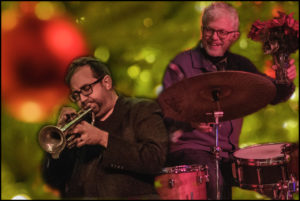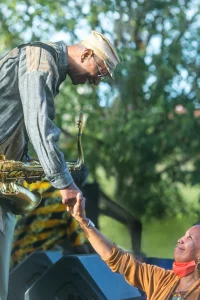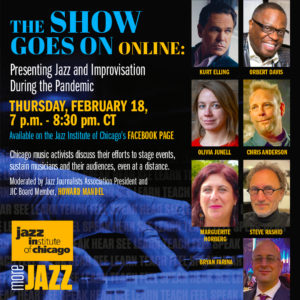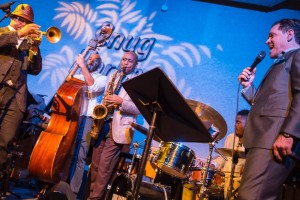Despite my avowed abhorrence of Christmas music, I enjoyed maestro Kurt Elling leading his hometown quintet in a holiday-themed performance at Chicago’s City Winery last Sunday. My entire evening — accompanied by best friends, and including the surprise discovery after the Winery show of a heartening young trumpeter at the Hungry Brain — was a […]
Jazz Autumn: Returns, galas and even awards
If all “jazz” shares a single trait, it’s that nothing will stifle it. Adjusting to covid-19 strictures, Chicago (just for instance) in the past two months has been site of: A stellar Hyde Park Jazz Festival; Herbie Hancock’s homecoming concert at Symphony Center; audiences happily (for the most part – no reported incidents otherwise) observing […]
Jazz beats the virus online
Chicago presenters of jazz and new music, and journalists from Madrid to the Bay Area, vocalist Kurt Elling, trumpeter Orbert Davis and pianist Lafayette Gilchrist discussed how they’ve transcended coronavirus-restrictions on live performances with innovative methods to sustain their communities of musicians and listeners, as well as their own enterprises were in two Zoom panels […]
Branford Marsalis and Kurt Elling in New Orleans, ready for recording
Saxophonist Branford Marsalis’s quartet and singer Kurt Elling prepared for their upcoming recording in a rare four-night stand at Snug Harbor in New Orleans last week, and photo-journalist extraordinaire Marc PoKempner went each night, enthralled. “It was sort of an open rehearsal for the recording, so the set list was the same every night,” PoKempner reported […]
Last glance 2010: great performances and best beyond jazz
There’s not much time left, so here are three of my best memories of live music over this crazy year, and a couple handfuls of favorite recordings that promise to be listenable for quite a while forward —
Why of the Jazz Journalists Assn’s Jazz Awards
Why give Jazz Awards? See my new column in City Arts re the event Monday 6/14 at City Winery in NYC, produced by the Jazz Journalists Assoc. (Full disclosure: I’m deeply involved — as left, last year presenting Kurt Elling his statuette for Best Male Vocalist, photo by Enid Farber. See us this year, streaming […]
Best beyond “jazz” CDs of 2009
My 10 top CDs of 2009 blow past conventions to enrich jazz, blues, new and unusual music. They’re chosen from almost 1000 I received for review — an abundance of fine releases since November 2008, the full year following Barack Obama’s election to president. Maybe it’s coincidence that fresh thinking, spirited energy and practical creativity […]




